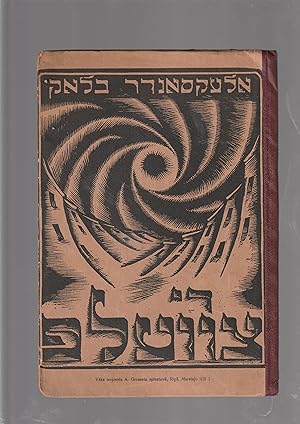Beschreibung
In Yiddish. 31 pages. 244 x 169 mm. WorldCat: Libraries worldwide that own item: 1. Dvenadstat (The Russian word for "Twelve") was first published in Petrograd (now St. Petersburg), in 1918 and, together with The Scythians, is the best and most famous work by symbolist poet Alexander Blok, one of Russia's greatest poets, who was also a publicist, playwright, translator and literary critic. The twelve red guards in this poem represent the new world and announce the revolution. The long poem exhibits mood-creating sounds, polyphonic rhythms, and it makes use of harsh slang. It describes the march of twelve Bolshevik soldiers, likened to Jesus' 12 Apostles, through the streets of revolutionary Petrograd, with a fierce winter blizzard raging around them. Many of Blok's former admirers were alienated by what they deemed its lack of artistry and his use of 1918 Petrograd's criminals' jargon and slang. The Bolsheviks, on the other hand, scorned him for his former mysticism and asceticism, and some were offended by the Christian motif. By 1921, Blok, became disillusioned with the Russian Revolution, had not written any poetry for three years, and was in failing health. The idealized mystical images presented in his first book established Blok as a major poet of the Russian Symbolism style. Blok's early verse is musical, but he later sought to introduce daring rhythmic patterns and uneven beats into his poetry. Poetical inspiration was natural for him, often producing unforgettable, otherworldly images out of the most banal surroundings and trivial events. During the 1910s, Blok was admired greatly by literary colleagues, and his influence on younger poets was unsurpassed. Anna Akhmatova, Marina Tsvetaeva, Boris Pasternak, and Vladimir Nabokov wrote important verse tributes to Blok. The striking illustrations of this edition are by Isac Friedlander. Born in 1890 in Mitau, Latvia, Isac Friedlander, an outspoken opponent of Czarist rule, was arrested and sentenced to death at age 16. He was saved both by good fortune and his formidable natural artistic talent, and was released in 1910. His mother sold her jewelry and sent him to Italy, where Friedlander received his only formal art training at the Academy of Rome. Following the overthrow of the Romanov dynasty, Friedlander returned to Latvia and taught painting and printmaking until 1929, when he embarked for America, where he embraced the plight of the millions cast down by the Great Depression, portraying their hardscrabble existence and suffering in his prints. During that period, Friedlander continued to follow the rise of authoritarian states in Europe and the plight of his people. In the period leading up to and during the Second World War, Friedlander earned lasting fame when he created etchings and woodcuts that documented the reports of suffering and persecution inflicted upon the conquered peoples throughout Nazi-dominated Europe. Throughout his career in America, Friedlander also turned his printmaking skills to commercial art and illustration. He died in New York. Bestandsnummer des Verkäufers 016172
Verkäufer kontaktieren
Diesen Artikel melden
![]()




